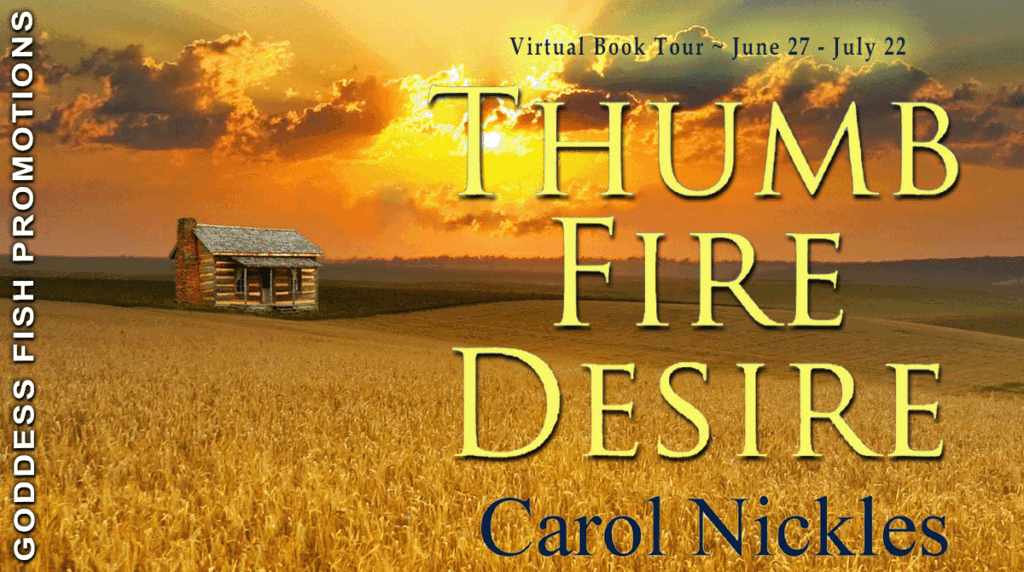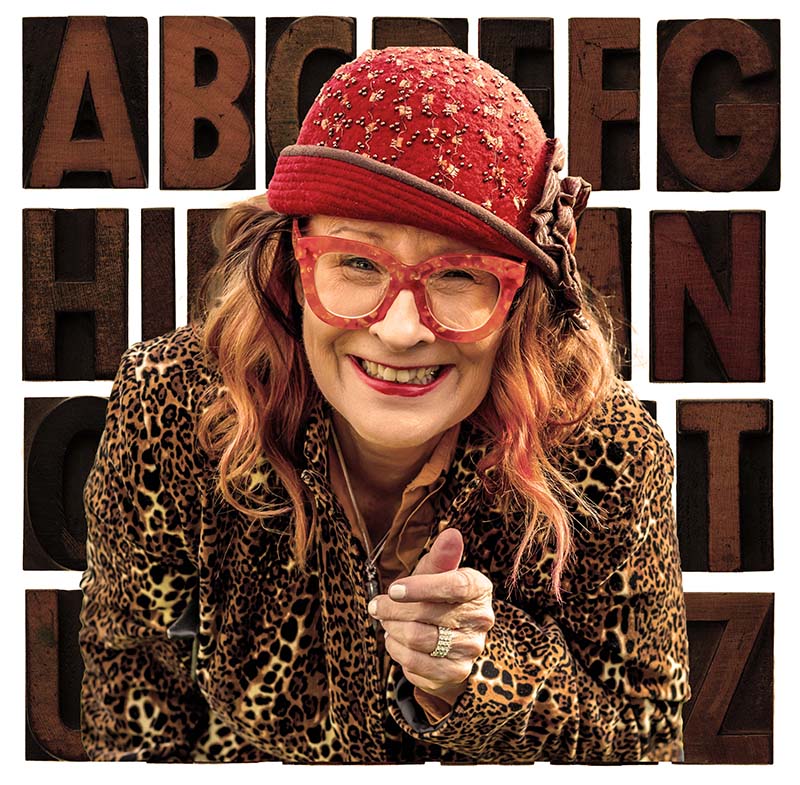https://goddessfishpromotions.blogspot.com/2022/05/vbt-thumb-fire-desire-by-carol-nickles.html
Carol Nickles will be awarding a $50 Amazon/BN GC to a randomly drawn winner via rafflecopter during the tour.
Thumb Fire Desire
by Carol Nickles
~~~~~~~~~~~~~
GENRE: Historical Romance
~~~~~~~~~~~~~
BLURB:
In the Spring of 1881, indigent seamstress Ginny Dahlke arrives in one of the earliest Polish American settlements-Parisville, Michigan. Deemed charmless and awkward by her mean-spirited sister-in-law, Ginny disparages her chance of securing love. But sought-after widowed farmer Peter Nickles is enamored by Ginny’s perseverance, her pioneer spirit and, her inclusive acceptance of the indigenous peoples of Michigan. The seductiveness of a buxom heiress, a twisted story of an old-country betrothal, and the largest natural disaster in Michigan’s history-The Great Thumb Fire of September 5, 1881, challenge their fledgling attraction and ultimate committal.
~~~~~~~~~~~~~
Excerpt:
“Watch your step. Watch your step, please,” the steward beckoned from his place on the platform, offering his arm to leave-taking passengers. Ginny stepped down. The heel of her kid leather pump caught in the juncture of the aisle floor and the train ladder’s top step. The blankets in her arms dropped onto the backs of the descending nuns. Her valise—weighted with a treasured book collection, conveyed from her father’s study, and two pounds of beef jerky wrapped in butcher’s paper—whacked the starched veil of the woman who spoke on her behalf. The target’s knees buckled. The nun tumbled face down on the back of her traveling sister.
Ginny toppled next. Mark Twain’s bestseller, the Dahlke family Bible, and a cracked leather-bound copy of Aesop’s Fables fluttered open and sailed into the congregation of the fallen.
From behind them, platform-roosting farmers rushed to retrieve the books, the butcher paper, and the integrity of three ladies.
A man resembling her father’s daguerreotype tugged Ginny by the shoulders and plucked her from the rubble. She clasped his neck and crushed her bonnet against his cheek. “Joseph,” she whispered, kissing a prickly cheek and whiffing aromatic cedar. She sneezed.
“Ginny, so glad you made it safely, even though the very last step of the journey is a sure-as-hell chance you’re going to Purgatory.” Her brother laughed, claiming her. “I mean, Ginny, you almost killed some nuns—nuns, for God’s sake,” he whispered as he tipped his hat to the black-and-white-clad women scurrying to a waiting wagon.
Author Carol Nickles
I grew up brotherless. By the time I was eleven, I had five younger sisters. Each of us was baptized wearing frothy layers of sheer batiste, adorned with hand-embroidered French knots and daisy chain stitches.
Our home was littered with doll carriages, dollhouses, and doll furniture.
On Monday afternoons, we attended Maybelle Van’s Dance Studio on Water Street and studied Cecchetti ballet. As we reached school age, my mother insisted we participate in Girl Scouting, a family tradition.
Yet amidst the trappings of baby dolls, ballet costumes, and Girl Scout uniforms lurked a phantom boyhood. None of us was immune.
Our father was responsible for the tug toward a tomboy spirit.
In contrast to the overwhelming gender of our home, my father was all-male—Eagle Scout, hunter, bowler, golfer, and a walk-on football player at Michigan State University. In college, he lived in a fraternity house. Once he married my mother, he became the singular household male, the one person in the family to get the bathroom to himself.
While he reveled in doing manly things, he shared his enthusiasm with his daughters. All of us can swim and ski and change a tire. I know where to place my fingers when I hurl a football. I know how to jerk tangled forks out of a garbage disposal. I know how to cast a fishing line, wire a ceiling fan, and unclog a toilet.
Something catastrophic and unchangeable happened to my dad the year his final daughter was born.
In 1963, hundreds of United States textile mills went out of business.
My father, who was long understood to assume the presidency of our family’s eighty-two-year-old Dun & Bradstreet regaled woolen mill was without a job.
Sorrow etched his face and cracked his voice as he led my sisters and I through a tour of the vacant carding room, past the spinning wheels, the looms and the finishing room. His rough fingers trailed the traces of the empty machines and his footsteps echoed loudly against the rough and warped wooden floors. I was his oldest—and I felt the weight of his sadness that day as we walked hand in hand traversing the paths of our ancestors and the families of workers who had become family to us.
My father’s great-great grandfather, Charles Andreae, had founded the Yale Woolen Mill in 1881. In time, Charles’s eldest son, Rudolph assumed the mill presidency. Frank, Rudolph’s eldest son followed and after him, my grandfather Frederick Niven Andreae Sr. My father was my grandfather’s eldest son. To prepare for his destiny, my father was assigned menial chores during his summer breaks from school. After he completed a Business Degree at Michigan State University he moved to Philadelphia and like two generations before him, studied at the Philadelphia Textile Institute.
Upon the mill closing, unsolicited job offers arrived from around the world—exotic places like Jamaica and India.
But my father had six little girls and an extended family close by. My parents decided to open retail fabric stores.
My father, the machinist, repaired sewing machines.
My mother, the artist, decorated the stores and organized sewing classes and fashion shows.
As a young teen, I began my work career cutting fabrics and advising customers on fabrics, trims and patterns.
Time went on. I attended Michigan State University and completed a Bachelors degree in Clothing and Textiles. I wanted to be a textile engineer. And for that, I would need a Master’s degree. One day I casually mentioned to one of my professors I had a family history involving a Michigan woolen mill. Dr. Anna Creekmore turned and stared. “That history should be the theme of your Master’s thesis.”
For three years I worked with Dr. Creekmore completing my thesis, The History of the Yale Woolen Mill – 1881-1963.* The day I placed the bound and autographed copy in my father’s hands was a day I will always treasure. Our family’s history has been preserved. And the weight on this eldest child’s shoulders has been lifted.
*Available in the U.S. Library of Congress, the William Jenks Historical Division of the St .Clair County, Michigan public library and for sale.
You can purchase copies of A History of the Yale Woolen Mill 1881-1963 through ProQuest Dissertations and Theses Publishing. Please keep in mind that all bound copy orders are custom produced, and it typically takes about 4-6 weeks to print and ship copies. Publication number is 1319165.



This story promises to be great reading.
Thanks for hosting!
It’s a pleasure to have you here Carol! Congratulations on this exciting release!
I love the cover, synopsis and excerpt, Thumb Fire Desire is a must read for me and I am looking forward to it. Thank you for sharing the author’s bio and book details
I really do! Say hello, ask me a question, tell me how you like to spend your summers! And thanks for stopping by!
Great excerpt, lovely cover, Thumb Fire Desire sounds like an excellent read, thanks for sharing it with me and have a marvelous day!
Sounds like a wonderful book.